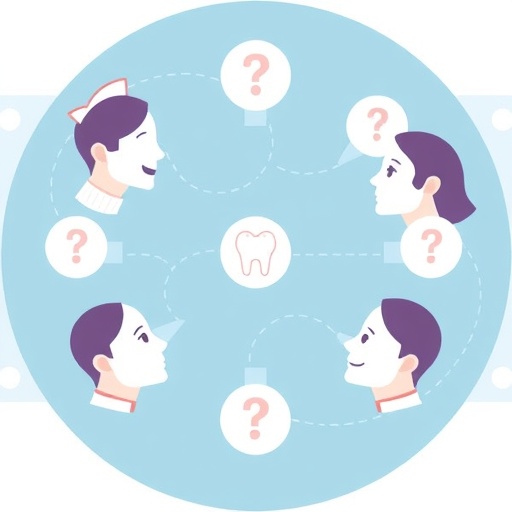
Credit: The Dartmouth Institute
Healthcare spending in the United States is the highest in the world: totaling $3.3 trillion–or 17.8% of the GDP–in 2016. To capture market share–and to expand the market–drug companies and healthcare organizations use a wide array of promotional activities, including TV and digital advertising, social media, disease awareness campaigns targeting consumers, and marketing to professionals via free drug samples or consulting payments. In an article recently published in the Journal of American Medical Association (JAMA), researchers from The Dartmouth Institute for Health Policy and Clinical Practice reviewed medical marketing (the marketing of prescription drugs, disease awareness, laboratory tests and health services to consumers and professionals) over a 20-year period from 1997 through 2016 and found that while it had increased dramatically from about $17.7 billion to $29.9 billion, regulation has not.
“Because the goal of medical marketing is to shape our perceptions of the benefits and harms of drugs, treatments, and even of diseases, themselves, it can have a very significant impact on healthcare and can even hamper efforts to control unsustainable healthcare spending,” says Dartmouth Institute Professor Steven Woloshin, MD, who co-authored the paper with his wife and longtime research partner, the late Professor Lisa Schwartz, MD. (Dr. Schwartz passed away in November of 2018).
In their review of spending, Schwartz and Woloshin found that the most rapid increase was in direct-to-consumer (DTC) advertising, which increased from $2.1 billion (11.9% of total spending) in 1997 to $9.6 billion (32% of total spending) in 2016.
Other findings on DTC spending during this period include:
- DTC prescription drug advertising increased from $1.3 billion (79,000 ads) to $6 billion (4.6 million ads, including 663,000 TV commercials), with a shift toward high-cost biologics and cancer immunotherapies.
- Disease awareness campaigns by pharmaceutical companies increased from 44 to 401 and spending on them increased from $177 million to $430 million.
- DTC advertising for health services increased from $542 million to $2.9 billion, with the largest spending increases by hospitals, dental centers, cancer centers, mental health and addiction centers, and medical services, such as home health.
- DTC spending on advertising for laboratory tests (such as genetic testing) increased from $75.4 million to $82.6 million; although due to less expensive electronic media advertising the number of ads increased more significantly from 14,100 to 255,300.
- In 1997, DTC ad spending for lab testing was almost exclusively for pregnancy/fertility tests, HIV tests, and glucose monitors, whereas, by 2016, 64% of DTC ad spending was for genetic tests. AncestryDNA, the highest advertiser spent $38 million in 2016.
While marketing to healthcare professionals rose less rapidly than DTC advertising, promotional activities did increase in most areas. Marketing to healthcare professionals by drug companies accounted for most of the promotional spending, with an increase from $15.6 billion to $20.3 billion during this period.
Other findings include:
- Spending on product detailing (typically face-to-face office and hospital visits by pharmaceutical company sales reps) to professionals was similar in 1997 and 2016, approximately $5 billion.
- Spending on free drug samples increased from $8.9 billion in 1997 to $13.5 billion in 2016.
- One of the few areas where spending decreased was in medical journal advertising, which declined from $744 million in 1997 to $119 million in 2016.
While the FDA’s Office of Prescription Drug Promotion (OPDP) is responsible for reviewing prescription drug advertising and related promotional materials to ensure their veracity, other organizations, such as the U.S. Department of Justice’s Consumer Protection Branch and the State Attorneys General offices also are involved in curbing misleading promotion. When reviewing regulatory activity from 1997-2016, Schwartz and Woloshin found the number of consumer and professional drug promotional materials which companies submitted for FDA review increased from 34,182 to 97,252. Yet, FDA violation letters for misleading drug marketing decreased from 156 to 11. While there have been 103 financial settlements between drug companies and federal and state governments since 1997–resulting in more than $11 billion in fines for deceptive or off-label marketing practices–the Federal Trade Commission (FTC) has acted against misleading marketing only in the case of a single for-profit cancer center.
“I think our findings highlight that there is a lot of room to be more active in regulating medical marketing. Enacting better oversight of product detailing or adding tables that quantify the benefits and adverse effects of drugs to advertising are two examples we cited in the paper, but there are many feasible steps that could be taken which could potentially improve the quality of health information and cut back on overprescribing and unnecessary medical spending,” Woloshin says.
###
Media Contact
Paige Stein
[email protected]
603-276-8721
Related Journal Article
http://dx.




